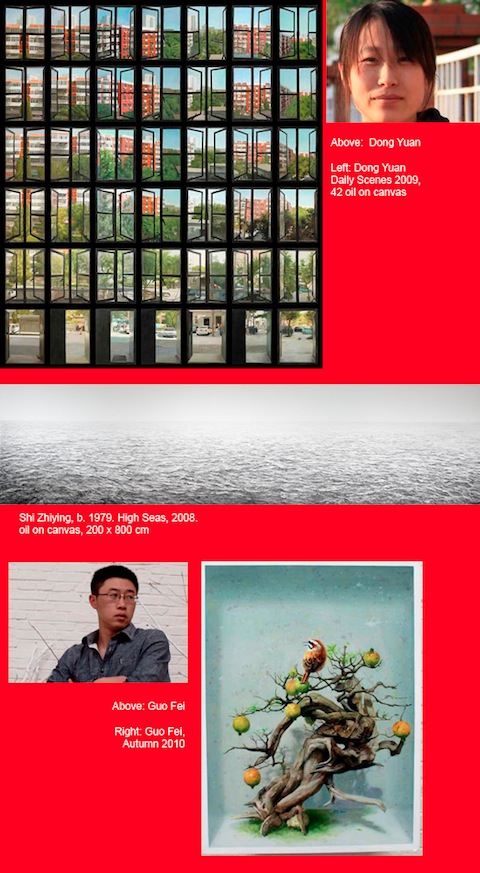
White Rabbit Gallery - Beyond the Frame
Home to brave new art from China, Australia’s White Rabbit Gallery stages a new exhibition, Beyond the Frame. ATL visits.


Sydney’s White Rabbit gallery is that rare creature: a privately owned public gallery on a grand scale. Even more rare (and unique in Australia), it’s entirely devoted to cutting edge contemporary Chinese art. The gallery is owned by the philanthropic Neilson foundation, brainchild of art aficionado Judith Neilson, who with her stylish and beautiful daughters Paris and Beau, makes regular trips to China. The (constantly growing) collection is housed in an impressive four level converted textile factory in inner city Chippendale. Entry is free, there are volunteer guides in cute red aprons on hand to answer questions, there is a reference library available for use in the afternoons, and a truly lovely teahouse hung with birdcages and decorated with fresh flowers, serving a range of artisan teas and Chinese dumplings.
I first visited the White Rabbit Gallery for the media preview of its inaugural exhibition in 2009. Returning for the current hang lacks something of the initial wow factor. It’s a quieter show, as well. Instead of Chen Wenling’s huge “Red Memory Smile” at the entrance, or Wang Zhiyuan’s massive cascade of rubbish in the Big Bang exhibition, the ground floor is more contemplative, given over to Shi Zhiying’s large oil painting High Seas and a soaring sharpened tree root sculpture by Song Jianshu. This focus on the natural world continues upstairs with Hang Feng’s whimsical multimedia Invasive Species Vegetables, 2010 and Guo Gei’s thought provoking painted sound boxes Autumn, 2010. Ai Weiwei’s porcelain Oil Spill adds to the dialogue. I’ve seen this work before and was pleased to revisit it. Similarly Jin Nu’s Where have all the Children Gone, 2005, where little girls’ gossamer dresses float like memories or ghosts.

The theme Beyond the Frame is addressed in many different ways, from the sensitive, minimal Double Standards by Chen Yufan to a huge expanse of rubble (destruction by war, by earthquake?) that shivers and moves on the gallery floor. It’s expressed most literally in the painting Daily Scenes, 42 views from an apartment building in Beijing, and most powerfully in Lu Nan’s documentary series of photographs Prison Camps in Northern Myanmar. Lu Nan is the only Chinese member of Magnum Photos. He keeps a low profile and prefers his work to speak for itself. On a trip to the impoverished Shan State in 2006 he encountered a group of people on the fringe, addicted to opium and heroin (the country’s largest export) and the prison camps devoted to them.

The White Rabbit Gallery is worth a visit anytime for its showcase of world-class contemporary art practice. The current exhibition is worth visiting for this installation alone. In their intimacy and emotional impact, these images remind me the work of the great Brazilian photographer Sebastiao Selgado. In the past Lu Nan has risked arrest and prosecution by photographing China’s Underground Catholics, Tibetan peasants and inmates of mental hospitals. In these candid shots of addicts (even children) shooting up or smoking, of arrests, of prisoners in heavy chain shackles sitting naked outdoors on a stool and showering from a bucket, or drifting around a dusty yard, Lu Nan opens a window onto human suffering on the margins of a society few realise even exists.
- Susie Burge, all rights reserved. Photo images courtesy of The White Rabbit Gallery.
The White Rabbit Gallery, 30 Balfour Street, Chippendale NSW, is open Thursday to Sunday, 10 a.m. to 6 p.m. Admission is free. (02) 8399 2867; info@whiterabbitcollection.org; www.whiterabbitcollection.org